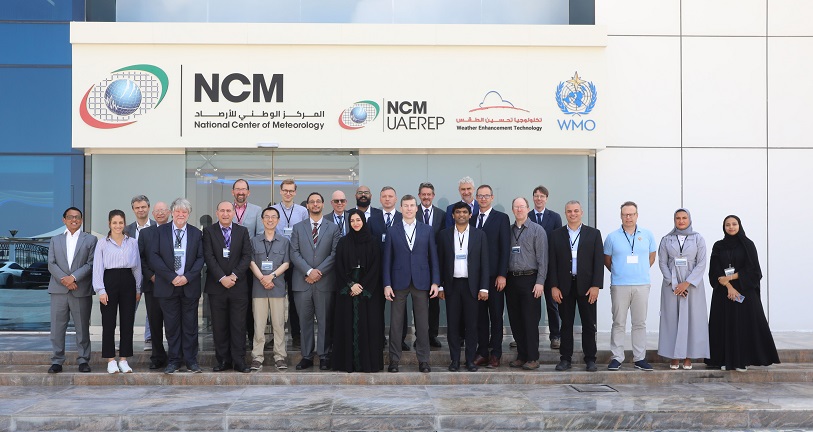
UAEREP Solidifies its 6 th Cycle Solicitation Document
The UAE Research Program for Rain Enhancement Science (UAEREP) hosted an international assembly of leading scientists, experts, and stakeholders to discuss strategic research thrust areas and outline short- and long-term roadmaps for its 6th Cycle. This cycle will offer grants to up to three winning research proposals, each receiving US$1.5 million distributed over three years. Submissions will open to researchers worldwide at the beginning of next year.
The high-level workshop discussed the Program’s strategic priorities, particularly exploring opportunities for partnerships with local universities and research institutions in the UAE, as well as engagement with the World Meteorological Organization (WMO) and other international entities.
The workshop solidified certain criteria, including the articulation of technology readiness level (TRL) progression for technologies, models, and other relevant deliverables, encouraging the involvement of UAE research community in proposed activities, as well as facilitating upcoming proposals by determining on which high-priority areas UAEREP will focus.
Alya Al Mazroui, UAEREP Director, said, "At UAEREP, we remain committed to enhancing international cooperation within the rain enhancement research community to advance scientific understanding and develop innovative solutions. By joining efforts with uniquely selected prominent scientists and experts, we have been able to successfully address our shared global challenges and lay the foundation for our 6th research grant cycle.”
Al Mazroui also emphasized the Program’s dedication to strengthening ties with the scientific community specializing in weather modification and rain enhancement, highlighting that the outstanding results achieved through projects funded by the Program over the past ten years demonstrate the value of such collaborations.
This year, workshop participants focused on five key thrust areas: optimized seeding materials, rain enhancement systems, autonomous unmanned systems (UAS), limited-area climate intervention, and advanced models, software, and data.
The experts covered critical areas of interest for rainfall enhancement applications, such as UAS communication systems and protocols, high reward/high-risk technologies and systems, and novel cloud seeding materials. Additionally, modeling and software discussions ranged from cloud chamber simulation software for microscale precipitation processes to Big Data analytics for short-term weather forecasting and cloud seeding decision support.
Steve Griffiths, Professor of Practice, Khalifa University, and member of the UAEREP Strategic Direction Committee, said, “As the pioneering international initiative funding innovative research in rain enhancement, UAEREP's legacy continues with the successful conclusion of this Solicitation Update Workshop. Through the cooperation of leading scientists and researchers from around the world, the team established the essential foundation for our 6th grant cycle solicitation.”
Many of the participants joined these key discussions for the first time, as UAEREP’s robust network of experts continue to seek innovative solutions for water security challenges and related environmental issues. In addition to the UAE National Center of Meteorology (NCM), the participants are from world-class entities both international and local, such as the World Meteorological Organization (WMO), the US National Center for Atmospheric Research (NCAR), Karlsruhe Institute of Technology, North-West University, and the Technology Innovation Institute (TII).
Prof. Jurg Luterbacher, WMO Director of Science & Innovation and Chief Scientist, said: “UAEREP is an especially important program as we continue to focus on rain enhancement possibilities, operations development, and infrastructure to ensure the sustainability of our water resources. By working together, we have successfully developed a short-term roadmap for the next few years, identifying priorities for future research calls. This collaborative effort puts us on a strong path to develop significant new research avenues that will ultimately enhance water security in the region.”
The diverse team of international experts engaged in discussions that conceptualized systematic approaches, developed stepwise criteria, and recognized opportunities and priorities for local partnerships. They also identified synergies for converging research and development pathways, as well as conducted systematic reviews to craft the solicitation document.
- Ends -



























